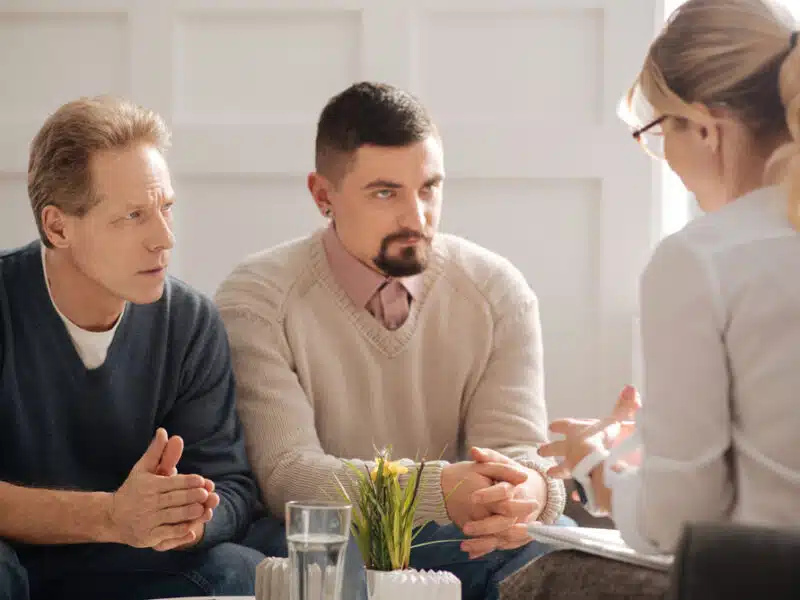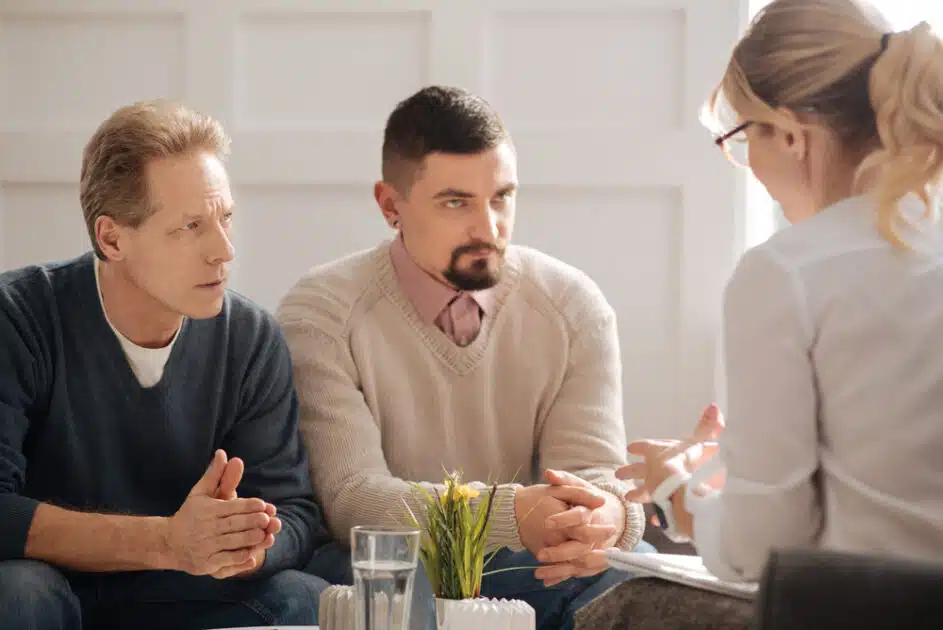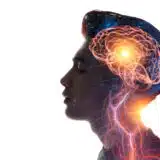LGBT Couples Therapy: Understanding What Works For Gay And Lesbian Couples

The Best Approach Tor Same-Sex Couples’ Therapy
What is Therapy? 05th Apr, 2023
Choosing which theory to use when working with couples should reflect the personality and abilities of the therapist. It should also be valuable and respectful of the needs of the client.
The most famous couples’ therapy theory was developed for heterosexual couples who wanted to avoid divorce.

Since then, many more theories have been developed, therefore, therapists working with gays and lesbians must ensure that the approaches they incorporate into their relationships are appropriate to the goals set by the partners.
A 2019 study assessed 40,682 couples before attending therapy, including 1,022 lesbian and 438 gay couples. It found that same-sex couples were in a better emotional state than heterosexual couples at the start of therapy, with higher satisfaction levels in various aspects of their relationships.
Gay and lesbian couples reported higher rates of family trauma, substance abuse problems, and anxiety, suggesting that therapists need to consider these issues when working with LGBT couples.
Research also indicates that same-sex couples have more equitable power dynamics, use humor and affection during conflict resolution, and possess greater skill in soothing their partners during difficult conversations.
Finding a Suitable LGBT Couples Therapist
To find a therapist who is experienced in working with LGBT couples, consider asking the following questions:
- “On a scale of 1-10, how comfortable are you talking about love and sexuality between same-sex couples?”
- “Can you tell us about your background, race/ethnicity, gender, social class, and religion or spirituality so we can gauge compatibility?”
- “Do you routinely address stressors of oppression in your work with couples?”
It’s essential to find a therapist who understands the unique challenges faced by LGBT couples, such as dealing with discrimination, internalized shame, and societal expectations.
The therapist should also recognize the importance of addressing intersectionality in regards to gender, gender identity, sexual orientation, race, and sociopolitical factors.
Sex Life and Sexual Partners: The Role of Monogamy in LGBT Couples Therapy
When working with LGBT couples, therapists must give particular attention to the couple’s perspectives and practices regarding monogamy.
Although monogamy is often seen as the standard in heterosexual relationships, LGBT couples might hold different views about its place in their relationships. For therapists, it is crucial to keep an open mind and establish a safe environment for couples to express their preferences.
Challenging conventional norms Some LGBT couples may decide to defy conventional norms related to monogamy by exploring alternative relationship structures, such as open relationships or polyamory.
Making these choices can be empowering and present opportunities for personal growth and connection. Nevertheless, they may also introduce unique challenges, like managing jealousy, setting boundaries, and sustaining emotional intimacy.
Couples therapy should offer a supportive setting for couples to examine these challenges and devise strategies to overcome them.
Monogamy as a Personal Choice for LGBT Couples For some LGBT couples, monogamy is a personal choice that aligns with their values and relationship goals. It is crucial for therapists to recognize and validate these choices while also promoting open communication about each partner’s expectations and desires.
Emotional Connection in LGBT Couples Therapy
Developing and maintaining a robust emotional connection is an essential component of any healthy relationship.
For LGBT couples, fostering emotional intimacy can be especially challenging due to the unique stressors and experiences they face. Couples therapy should prioritize building emotional connection by addressing the following aspects:
- Overcoming internalized shame and guilt
Many LGBT individuals experience internalized shame and guilt related to their sexual orientation or gender identity. These feelings can create barriers to emotional intimacy, as they may hinder open and honest communication between partners.
Therapists should work with couples to identify and address these emotions, helping them develop strategies for self-compassion and self-acceptance.
- Navigating vulnerability and trust
Building emotional intimacy often requires vulnerability and trust. However, LGBT couples may struggle with these aspects due to past experiences of discrimination, rejection, or trauma.
Therapists should support couples in developing trust and fostering a safe space for vulnerability within their relationships.
- Cultivating empathy and understanding
Empathy and understanding are key components of emotional connection. In LGBT couples therapy, therapists should facilitate open and honest communication between partners, encouraging them to listen actively and empathize with one another’s experiences.
This can help to deepen the emotional bond and create a strong foundation for the relationship.
- Strengthening emotional regulation skills
Effective emotional regulation is crucial for maintaining a healthy emotional connection. LGBT couples may face unique stressors that impact their emotional well-being, such as discrimination or navigating coming out.
Therapists should work with couples to develop emotional regulation skills, helping them navigate difficult emotions and maintain a strong emotional connection.
By addressing these aspects of sex life, monogamy, and emotional connection, therapists can provide comprehensive and tailored support to LGBT couples, helping them build strong, resilient relationships that thrive in the face of unique challenges and experiences.
Differences In Treatment For Same-Sex Couples
When searching for therapy to help your same-sex relationship, make sure to do some research to pick the correct approach. In doing this, the first objective should be to consider whether the factors of the couple’s problems would be the same for a heterosexual couple.
Most of the time, same-sex couples and heterosexual couples share a common goal: the desire for better communication, shared values, the need to deal with personal differences to complement each other, and the desire to feel committed to their partner.
Couples’ therapists, however, must be aware of expected differences in same-sex relationship experiences due to their gender identity. The way society has historically treated homosexuals, same-sex couples may be more vulnerable to relationship distress.
They face the challenge of dealing with the development of their gender identity, social discrimination, and the concealment of their sexuality from friends and family.
Additionally, common problems in lesbian and gay relationships revolve around the commitment phase, monogamy norms, and varying degrees of HIV risk that are not typically present in heterosexual couples.
For many LGBT individuals, coming out is not a one-time event but an ongoing process that intersects with other aspects of their identity, such as race, ethnicity, and socio-economic background.
This intersectionality can create unique challenges and opportunities for growth within a relationship. Therapists should be mindful of the complex interplay between these factors and how they influence the couple’s experience.
By incorporating coming out stories into LGBT couples therapy, therapists can gain valuable insight into the unique challenges and strengths of each partner and their relationship.
These stories provide a crucial context for understanding the dynamics at play within the relationship and help therapists to develop tailored, effective interventions to support the couple’s growth and well-being.
The Gottman Method Can Be Ideal For Same-Sex Couples:
The Gottman method is a multidimensional treatment method that helps partners in the conflict stage. It is efficient in assisting couples to stop their arguments and create more comfortable communication, by improving basic social skills.
The method also aims to develop an awareness of interpersonal conflicts associated with relational behaviours such as criticism, contempt, distancing, and obstruction. The end goal of the Gottman Method is to express dissatisfaction in a more civilised way, and to create a culture of appreciation, acceptance, and mutual responsibility for problems.
A study published by the Gottman Institute in 2017 used Gottman’s method to collect and measure gay couples’ relationship satisfaction at five different times. The data showed that both gay and lesbian couples improved significantly after 10 treatment sessions.
This study showed that the Gottman method is very effective for same-sex couples. In almost half of the sessions of a typical heterosexual couple using the Gottman Method, the improvement for homosexual couples was more than double that of most heterosexual couples.
This is generally due to the belief that because of lower gender roles and inequality, same-sex couples perform typically better than opposite-sex couples. For same-sex couples, the degree of socialisation is usually similar. They may have similar communication styles to heterosexual couples.
The study also shows that although problems with same-sex couples are not necessarily easier to deal with than opposing partners, the Gottman method creates a way for couples to discuss their unique preferences in a more civilised manner.
The use of Gottman’s method intervention provides same-sex couples with ways to improve relationships. These methods of communicating criticism and defensive antidotes can be applied to your unique challenges.
Same-sex couples also reported that, thanks to the new communication skills taught in the Gottman method, they received support in establishing friendships and rekindle the sexual spark in their relationship.
The Bottom Line
In conclusion, LGBT couples therapy requires a tailored and sensitive approach that takes into account the unique challenges and experiences faced by same-sex partners.
By addressing aspects such as coming out stories, the role of monogamy, and fostering emotional connection, therapists can provide invaluable support to LGBT couples as they navigate their relationships. It is essential for therapists to create a safe, non-judgmental space where couples can openly discuss their needs, desires, and experiences.
By doing so, they can help LGBT couples build strong foundations for their relationships, allowing them to thrive and flourish in a world that is still evolving in its understanding and acceptance of diverse relationship structures and experiences.
Featured Image: YAKOBCHUK VIACHESLAV/Shutterstock




















